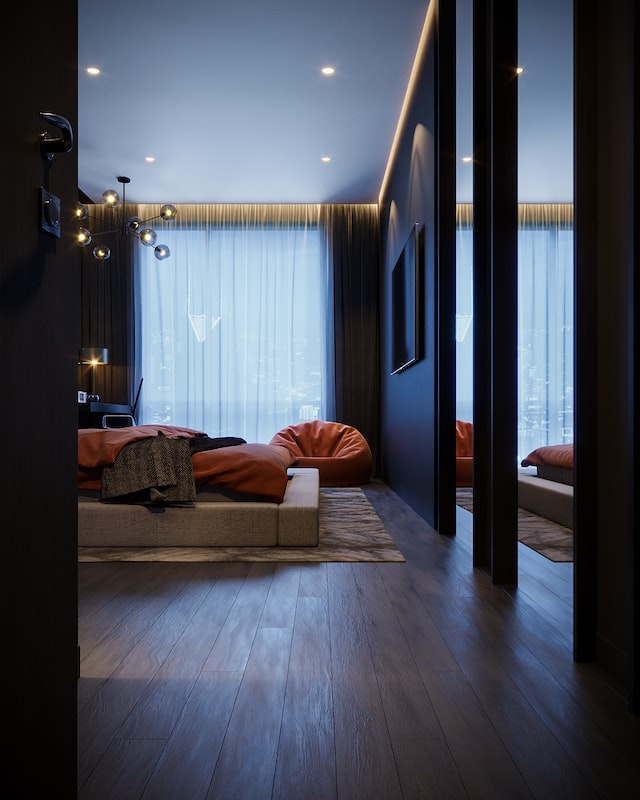Finding the right 3D rendering artist can be daunting. With so many options available, it can be difficult to narrow it down to the perfect artist for your project. It’s important to remember that the artist you choose will have a huge impact on the success of the project.
To help you find the perfect 3D rendering artist for your project, we have put together an essential checklist. This checklist will provide you with key criteria to consider when selecting an artist or an architectural rendering studio, such as portfolio, experience, and pricing. With this checklist, you can quickly and easily identify the best 3D rendering artist for your project and ensure a successful outcome.
Evaluating the 3D rendering Artist’s Portfolio
When you’re evaluating a 3D rendering portfolio, look closely at their previous work to see if their style matches the style of your project. The artist’s work should closely reflect the industry standard for quality. If the artist’s portfolio does not reflect high-quality 3D rendering, this could be a sign of things to come for your project. Keep in mind that not all projects have the same level of detail or quality.
If you’re unsure about an artist’s portfolio, don’t hesitate to ask questions. If the artist’s work closely matches the style of your project, this is a good sign that they are a good fit. No matter whether you hire a 3D rendering company or a 3D rendering freelancer, you should keep in mind, that artists will always showcase their best work in their portfolios.

Photo by Bilal Mansuri on Unsplash
Assessing the Experience of a 3D Rendering Artist
It goes without saying that you want to choose 3D rendering artist with many years of field experience. When you’re evaluating an artist’s experience, look at their track record.
- How long has the artist been in the 3D rendering business?
- How many projects has the artist completed?
- How many years of experience does the artist have?
- Are there any awards or recognitions that the artist has received?
- What types of projects have the artist completed?
- Has the artist worked on something similar to your project in the past?
These are all important questions to consider when assessing a 3D rendering artist’s experience. Experience is important for a number of reasons. An experienced artist will likely have the necessary skill set and know-how to successfully complete your project, which can help to minimize additional costs and project delays.
An experienced 3D rendering artist will likely have the resources and connections necessary to source the best materials and meet your specific needs, including the latest technology, file formats, and delivery methods. Beyond this, an experienced professional keeps track of the latest 3D rendering trends.
Considering the Artist’s Pricing
When you’re evaluating an artist’s portfolio, you will likely notice their price point. Before you select the artist with the lowest price point, make sure that you are comfortable with their pricing structure. Some artists may charge by the hour, others may charge by the image, and some artists may charge a flat rate per project.
Be sure to ask the vendor about their pricing structure before accepting their bid so that you have a clear understanding of what you’re paying for. Some artists may have different pricing structures for commercial projects and private projects. Before you select the artist with the lowest price point, you should be aware that pricing can often be a sign of quality. An artist with higher pricing may have better resources, experience, and/or better billing practices.
Visualizing the Artist’s Vision
When you are interviewing prospective 3D architectural rendering artists, it is important to get a sense of their visual style. You can do this by looking at their portfolio and/or previous work. If you are working with a video artist, look at the style of their previous work, such as music videos, commercials, trailers, etc. If you are working with a still-image artist, ask to see previous work in the same industry as your project, such as architectural renderings, product renderings, etc.
When interviewing the artist or a company that offers architectural rendering services, be sure to ask them about their visual style and if it matches the visual style of your project. If the visual styles match, this is a good sign that the artist is a good fit for your project.

Photo by Bilal Mansuri on Unsplash
Measuring the Artist’s Communication
Communication is a vital part of any business relationship. Before you sign with an artist, you should evaluate the artist’s communication skills. How quickly does the artist respond to messages? What is the artist’s communication style like? Are they helpful and friendly, or are they curt and formal? Are they easy to understand?
These are all important questions to consider when evaluating an artist’s communication skills. Good communication can help to minimize project delays, which is important, especially if you are on a tight deadline. Good communication can also help to ease any concerns you may have about the artist’s process or approach. Moreover, it is not only important during the initial stages of the project, but throughout the entirety of the project. Even if you are not in constant communication with the artist, it’s important to check in regularly to see how the project is progressing.
Evaluating the Artist’s Timelines
When you’re evaluating an artist’s timeline, you want to make sure that their timeline for your 3D visualization project is realistic for your specific project and industry. You can typically find this information in the artist’s bid. If you are working with an artist on a private 3D visualization project, you may not see the artist’s timeline for your project. If this is the case, you can ask the artist for their timeline, or you can refer to their website or portfolio to see the typical turnaround times.
Your goal is to make sure that their timeline is realistic for your specific project and industry. If the artist’s timeline doesn’t seem realistic, you may want to select another artist. If you are working with an artist on a commercial project, the timeline will likely be a lot shorter than if you were working on a private project.
Exploring the Artist’s Specialties
Some artists specialize in still images, others specialize in video, and some artists specialize in both. Some artists may specialize only in architectural renderings, product renderings, etc. When you’re evaluating an artist’s portfolio, you can get a sense of the artist’s specialties and determine if their specialties match the needs of your project.
It’s important to keep in mind that an artist’s specialties may not match the needs of your project. If an artist specializes in product renderings, for example, and you need architectural renderings, this may not be a good fit. However, if the artist’s specialties do match the needs of your project, this is a good sign that they are a good fit.
Assessing the Artist’s Flexibility
You want to make sure that the artist you select is flexible and willing to work with you to make the project successful. You can evaluate an artist’s flexibility by asking them questions and reviewing their portfolio. If you are working with an artist on a private project, you can ask them how they would handle specific situations, such as a missed deadline or needing a revision.

Photo by Bilal Mansuri on Unsplash
If you are working with an artist on a commercial project, you may not be able to ask them specific questions about how they would handle specific situations. If you notice that the artist is not flexible, or they are not willing to work with you to make the project successful, you may want to select another artist.
Checking the Reviews
Before you sign with an artist, you may want to look through their online reviews. You can typically find the artist’s reviews on their website, on portfolio sites where they’ve submitted work, and on social media. It goes without saying that you want to look for honest and recent reviews from previous clients. Whether you are working with an artist on a private project or a commercial project, you need to make sure that the chosen company or freelancer has many years of field experience.
Well, who is better, a freelancer or 3D rendering studio? Anyway, it is always better to hire a professional company with many years of field experience in exterior rendering, interior rendering, and 3D visualization. In this case, you can be doubly sure that your project will be completed on time and of the highest quality.
What’s more, an experienced 3D rendering studio will provide you with advice and recommendations about the best technologies for your project. A good studio should also have a wide portfolio of projects to prove its expertise. Besides, professional 3D artists know how to work in a team and are able to meet tight deadlines, so you don’t have to worry about anything when it comes to getting your project done.


